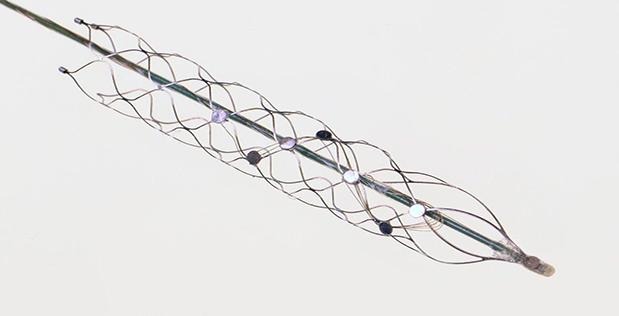DARPA: 'Stentrode' Implant Travels To Brain Via Blood Vessels
Under DARPA's Reliable Neural-Interface Technology program, a team from the University of Melbourne has created a new device called a 'stentrode' that, when implanted near one's brain, is able to read signals from neurons. The work was done as part of a DARPA project, and it is said to be safer than implants requiring brain surgery. The device is about the size of a paperclip, according to the researchers, and it is implanted through a blood vessel.
DARPA, which seeks such devices for its various projects, detailed the prototype device in a statement today, saying the researchers performed a proof-of-concept study using sheep. The stentrode, as it's called, takes "high-fidelity measurements" of brain cells — in the case of the sheep, the researchers took measurements of the part of the brain that controls voluntary movements.
Stents, generally speaking, are common medical tools for clearing blood vessels, among other things. The researchers in this case used readily available stent technology and transformed it into something new, adding an array of electrodes on materials designed to be stiff enough to hold them, but flexible enough to be maneuvered into a blood vessel.

As with normal stents, a stentrode is fed through a blood vessel, in this case one located in the neck. When in position, the stentrode expands to fix itself in place, and it then provides data from neuron activity. Medical professionals use a real-life imaging technology to guide the stentrode into place. The researchers, who developed the stentrode under UoM's Vascular Bionics Laboratory, implanted one into the superficial cortical vein found on the sheep' motor cortex.
DARPA, as those who follow it will know, has been working on a variety of technologies that involve direct interaction with the brain. One example is a prosthetic limb that can be controlled by implanting an electrode array in the motor cortex. Such implants are risky in their current form, though, and limiting. This technology drastically reduces the recovery time brain surgery would require, and is considerably safer than the alternative.
The device has proven successful enough that the researchers will move on to human trials starting some time next year; they will take place in Melbourne, Australia at the U.S. Office of Naval Research.
Sound interesting? Last month, DARPA also detailed a new program that seeks a device that will function as a translator between the human brain and a computer. Read more about it here!
SOURCE: DARPA
